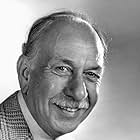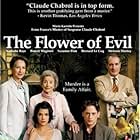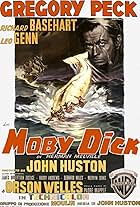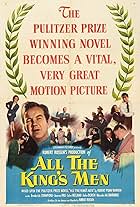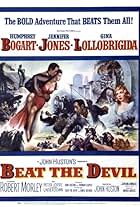VALUTAZIONE IMDb
7,0/10
6749
LA TUA VALUTAZIONE
Aggiungi una trama nella tua linguaFictional account of French artist Henri de Toulouse-Lautrec.Fictional account of French artist Henri de Toulouse-Lautrec.Fictional account of French artist Henri de Toulouse-Lautrec.
- Vincitore di 2 Oscar
- 6 vittorie e 10 candidature totali
Trama
Lo sapevi?
- QuizJosé Ferrer was transformed into the short artist Toulouse-Lautrec by the use of camera angles, make-up, costume, concealed pits and platforms, and short body doubles. Ferrer also used a set of special knee pads of his own design which allowed him to walk on his knees with his lower legs strapped to his upper body. He suffered extreme pain and could only use them for short periods of time. The cane he used in most of his scenes was of absolute necessity. This fact was covered in a LIFE Magazine story in 1952.
- BlooperWhen Henri Lautrec arrives at the gallery for the showing of his pictures, as he 'walks' in, his shadow on the ground clearly shows José Ferrer's legs tucked behind him as he walks (on his knees).
- Citazioni
Jane Avril: Henri, my dear, we just heard you were dying. We simply had to say good-bye.
- Curiosità sui creditiThe opening credits play over some of Marcel Vertès's pastiche Lautrec drawings; the photography credits are superimposed over a picture of a photographer, and the music credits over a man playing piano.
- ConnessioniFeatured in La famiglia Partridge: This Is My Song (1970)
- Colonne sonoreWhere is your Heart
(Moulin Rouge)
Music by Georges Auric
French lyrics by Jacques Larue
English lyrics by William Engvick
Performed by Muriel Smith
Recensione in evidenza
I've always had a great affection for this film, although I realized long ago that it has its problems. Most casual viewers and amateur reviewers apparently like it, but it seems to rub some people decidedly the wrong way for various reasons.
Old-fashioned it certainly is, especially when compared to Baz Luhrmann's frenetic rock video-style musical. Though Luhrmann's film is in no way a remake of Houston's, you could legitimately compare the depictions of a night at the Moulin Rouge that occur early in both films. Luhrmann's objective seems to be completely different from Houston's. As flashy and exciting as his images are, the hyper-fast editing and use of pop music from the mid to late 20th century demonstrate absolutely no interest in evoking a sense of the time and place. What I like about Houston's depiction of the Moulin Rouge is the sense of atmosphere, the way a smoky haze can be seen hanging in the air, and the dances seem to more-or-less belong to the era. Interesting, too, is the way images from Toulouse-Lautrec's work are incorporated into this extended scene as he might have originally observed them. Those familiar with his paintings can recognize Moulin Rouge dancers like the tall, bizarre-looking Vincent DeSossier and "La Goulue," looking just as they do in the famous poster, and the sprightly black dancer "Chocolat." Patrons like the two women waltzing together serenely, and a pair of rather reserved Englishmen sitting at a table, are also familiar from the paintings.
I've always found Georges Auric's musical score rather effective. One of "Les Six," the group of avant-garde French composers who pushed the envelope of musical style in the early 20th century, he was a seasoned and sophisticated film composer who worked with Cocteau. Maybe the producers of "Moulin Rouge" thought an authentic French composer suitable for the project, and his score is sec (dry), not the least bit melodramatic, and lyrical in a way that seems to me distinctly French. This musical score may contribute to the reserved, stately, or detached quality that some reviewers see in the film.
For me that sec musical score seems appropriate to Jose Ferrer's portrayal of Toulouse-Lautrec. A pathetic figure, he does not beg us for pity, nor does the film itself turn maudlin or try to manipulate us to tears, which makes the final scene all the more moving. Some of the trick shots showing Ferrer kneeling with shoes stuck to his knees are a bit unfortunate. Too bad they couldn't come up with a better effect for this illusion. As for Zsa-Zsa Well, nothing's perfect, I guess, but I don't think a touch of kitsch kills this film. Made in the early 1950s, it's not surprising that "Moulin Rouge" avoids the raunchier aspects of turn-of-the-century bohemian life, but I still think it evokes the era admirably. A classic? I don't know, but definitely a classy film that has its staunch admirers, including me.
Old-fashioned it certainly is, especially when compared to Baz Luhrmann's frenetic rock video-style musical. Though Luhrmann's film is in no way a remake of Houston's, you could legitimately compare the depictions of a night at the Moulin Rouge that occur early in both films. Luhrmann's objective seems to be completely different from Houston's. As flashy and exciting as his images are, the hyper-fast editing and use of pop music from the mid to late 20th century demonstrate absolutely no interest in evoking a sense of the time and place. What I like about Houston's depiction of the Moulin Rouge is the sense of atmosphere, the way a smoky haze can be seen hanging in the air, and the dances seem to more-or-less belong to the era. Interesting, too, is the way images from Toulouse-Lautrec's work are incorporated into this extended scene as he might have originally observed them. Those familiar with his paintings can recognize Moulin Rouge dancers like the tall, bizarre-looking Vincent DeSossier and "La Goulue," looking just as they do in the famous poster, and the sprightly black dancer "Chocolat." Patrons like the two women waltzing together serenely, and a pair of rather reserved Englishmen sitting at a table, are also familiar from the paintings.
I've always found Georges Auric's musical score rather effective. One of "Les Six," the group of avant-garde French composers who pushed the envelope of musical style in the early 20th century, he was a seasoned and sophisticated film composer who worked with Cocteau. Maybe the producers of "Moulin Rouge" thought an authentic French composer suitable for the project, and his score is sec (dry), not the least bit melodramatic, and lyrical in a way that seems to me distinctly French. This musical score may contribute to the reserved, stately, or detached quality that some reviewers see in the film.
For me that sec musical score seems appropriate to Jose Ferrer's portrayal of Toulouse-Lautrec. A pathetic figure, he does not beg us for pity, nor does the film itself turn maudlin or try to manipulate us to tears, which makes the final scene all the more moving. Some of the trick shots showing Ferrer kneeling with shoes stuck to his knees are a bit unfortunate. Too bad they couldn't come up with a better effect for this illusion. As for Zsa-Zsa Well, nothing's perfect, I guess, but I don't think a touch of kitsch kills this film. Made in the early 1950s, it's not surprising that "Moulin Rouge" avoids the raunchier aspects of turn-of-the-century bohemian life, but I still think it evokes the era admirably. A classic? I don't know, but definitely a classy film that has its staunch admirers, including me.
I più visti
Accedi per valutare e creare un elenco di titoli salvati per ottenere consigli personalizzati
- How long is Moulin Rouge?Powered by Alexa
Dettagli
- Data di uscita
- Paese di origine
- Lingue
- Celebre anche come
- John Huston's Production Moulin Rouge
- Luoghi delle riprese
- Aziende produttrici
- Vedi altri crediti dell’azienda su IMDbPro
Botteghino
- Budget
- 1.500.000 USD (previsto)
- Lordo in tutto il mondo
- 3.188 USD
- Tempo di esecuzione1 ora 59 minuti
- Proporzioni
- 1.37 : 1
Contribuisci a questa pagina
Suggerisci una modifica o aggiungi i contenuti mancanti

Divario superiore
By what name was Moulin Rouge (1952) officially released in India in English?
Rispondi








